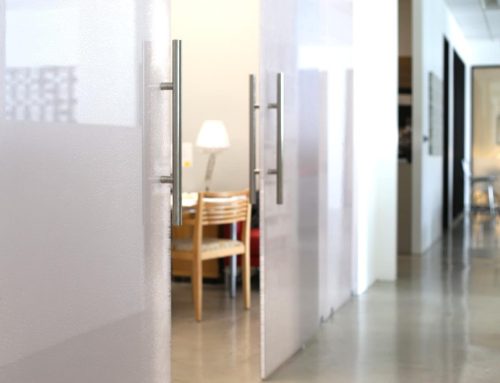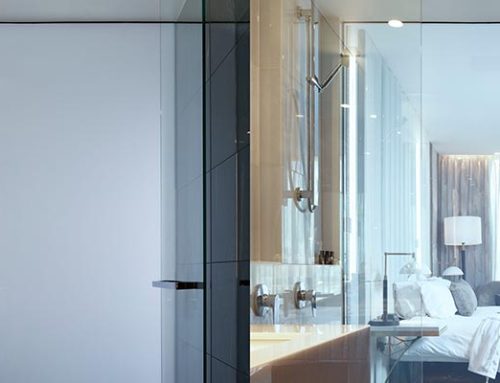The awareness of the importance of acoustic treatments in schools is growing for good reason. Environmental noise pollution is prevalent in schools and chronic exposure can cause profound, wide-ranging, and long-term harm to children and adults alike. There is evidence that acoustic treatment can substantially reduce excessive noise levels and their adverse effects on physical health, academic achievement, and psychosocial well-being. The refurbishment of classrooms, which incorporate sound mitigation, has been shown to significantly improve both students’ and teachers’ listening and attentional capacities, and their overall sense of physical and mental well-being (1, 2).
Due to this, classroom acoustics are becoming a key priority when designing and building new schools or renovating or refurbishing existing ones. With the growing demand for sound mitigation, agencies such as the Environmental Protection Agency (EPA) and environmental accrediting bodies have developed standards to ensure that children and educators in school environments are in a safe and sound environment. Before we talk about the solutions we offer at Surface Products for acoustic treatments, let’s dive in a bit more to understand why proper acoustics are essential for healthy nervous system development of the kids attending schools and those teaching them.
Physical & Psychosocial Harms
Spending extended amounts of time in noisy environments can have acute and lasting physical and psychosocial harm on children and adults. The negative impacts that environmental noise exposure has been associated with include stress-induced spikes in blood pressure, respiration, heart rate, and muscle tension. For more long-term physical harm, extended exposure to noise pollution has shown an increased risk of hearing loss and tinnitus. (3,4,5,6). Unfortunately, the harmful effects of noise pollution extend far beyond the physical. Studies show that there are impacts on mental health such as an increase in the risk of depression, anxiety, and sleep disorders. (7,8,9). More studies show being in sustained, noisy environments extend to cognitive disorders, emotional hyperreactivity, and a decline in academic performance. While all this sounds daunting, there is hope with the proper installation of acoustic treatments.
How Surface Products Can Help
At Surface Products, we offer a wide range of state-of-the-art, customizable acoustic treatments for residential, commercial, government facilities, and public and private schools. Our very affordable and fully customizable products will be able to meet not only your specific acoustic needs but aesthetic as well. We specifically recommend Autex Acoustic Panels due to a number of reasons that set them apart from other sound-absorbing panels:
- All of Autex Interior Acoustics are made from 100% Polyester Fibers with no chemical binders and certified low VOC
- Autex Interior Acoustics are lightweight, easy to install and are suitable for new builds and retrofit soundproofing
- Made from 100% Polyester; Autex Interior Acoustics are safe, non-toxic, non-allergenic and contain no irritants
- Our products contain as much recycled polyester fibre (PET) as possible before the performance of the product is compromised. For some products, this number is around 80%, and for others, it is closer to 45%.
- Our products are designed to be recycled at the end of their life too, continuing the cycle of reuse
Sources
- Pirilä S, Jokitulppo J, Niemitalo-Haapola E, Yliherva A, Rantala L. Teachers’ and Children’s Experiences after an Acoustic Intervention and a Noise-Controlling Workshop in Two Elementary Classrooms. Folia Phoniatr Logop. 2020;72(6):454-463. doi: 10.1159/000503231. Epub 2019 Oct 22. PMID: 31639814.
- Kristiansen J, Lund SP, Persson R, Challi R, Lindskov JM, Nielsen PM, Larsen PK, Toftum J. The effects of acoustical refurbishment of classrooms on teachers’ perceived noise exposure and noise-related health symptoms. Int Arch Occup Environ Health. 2016 Feb;89(2):341-50. doi: 10.1007/s00420-015-1077-3. Epub 2015 Aug 11. PMID: 26259727.
- Hahad, O., Kröller-Schön, S., Daiber, A., & Münzel, T. (2019). The Cardiovascular Effects of Noise. Deutsches Arzteblatt international, 116(14), 245–250. https://doi.org/10.3238/arztebl.2019.0245
- Correia, A., Peters, J., Levy, J., et al. (2013). Residential exposure to aircraft noise and hospital admissions for cardiovascular disease: multi-airport retrospective study. The BMJ. doi: https://doi.org/10.1136/bmj.f5561
- Dangerous Decibels: Hospital Noise More Than a Nuisance. (n.d.) Retrieved September 4, 2022 from https://www.rn.com/nursing-news/hospital-noise-more-than-a-nuisance/
- Jue, K., Nathan-Roberts, D. (2019). How Noise Affects Patients in Hospitals. SAGE Journals, 63(1), 1510-1514. doi:https://doi.org/10.1177/1071181319631325
- Lim J, Kweon K, Kim HW, Cho SW, Park J, Sim CS. Negative impact of noise and noise sensitivity on mental health in childhood. Noise Health. 2018 Sep-Oct;20(96):199-211. doi: 10.4103/nah.NAH_9_18. PMID: 30516173; PMCID: PMC6301087.
- Clark C, Crumpler C, Notley AH. Evidence for Environmental Noise Effects on Health for the United Kingdom Policy Context: A Systematic Review of the Effects of Environmental Noise on Mental Health, Wellbeing, Quality of Life, Cancer, Dementia, Birth, Reproductive Outcomes, and Cognition. Int J Environ Res Public Health. 2020 Jan 7;17(2):393. doi: 10.3390/ijerph17020393. PMID: 31936110; PMCID: PMC7013411.
- Crombie R, Clark C, Stansfeld SA. Environmental noise exposure, early biological risk and mental health in nine to ten year old children: a cross-sectional field study. Environ Health. 2011 May 14;10:39. doi: 10.1186/1476-069X-10-39. PMID: 21569605; PMCID: PMC3117762.






